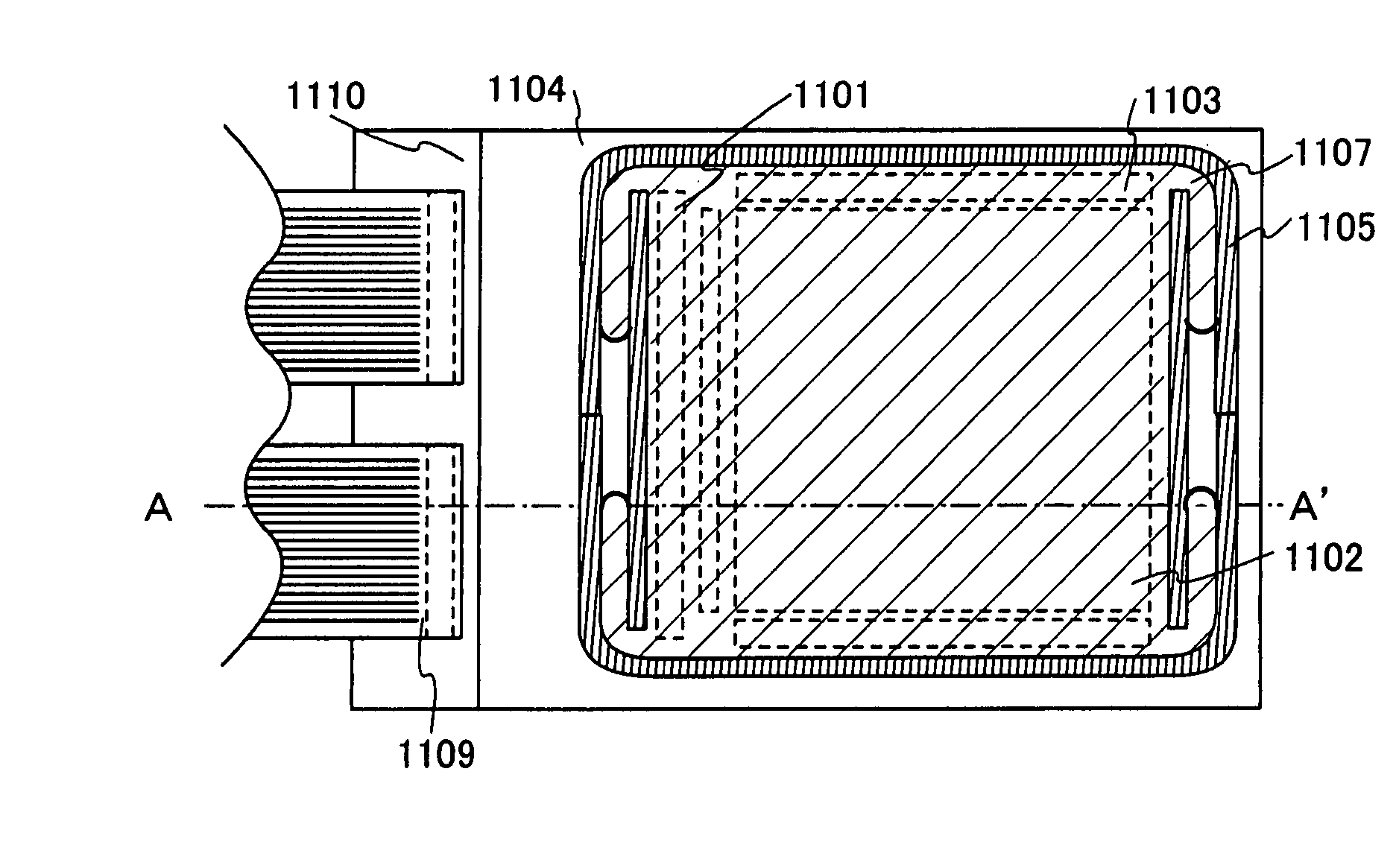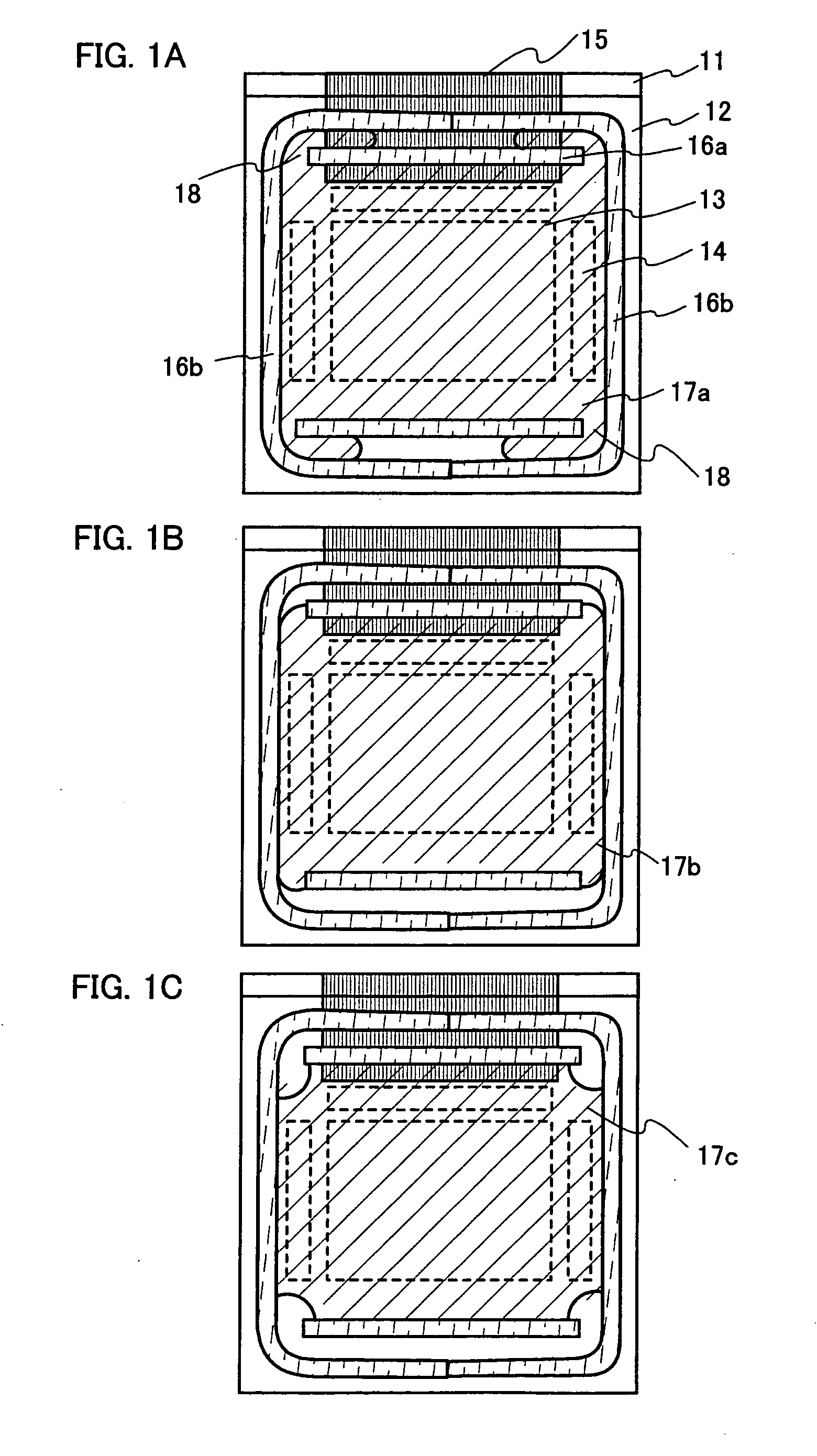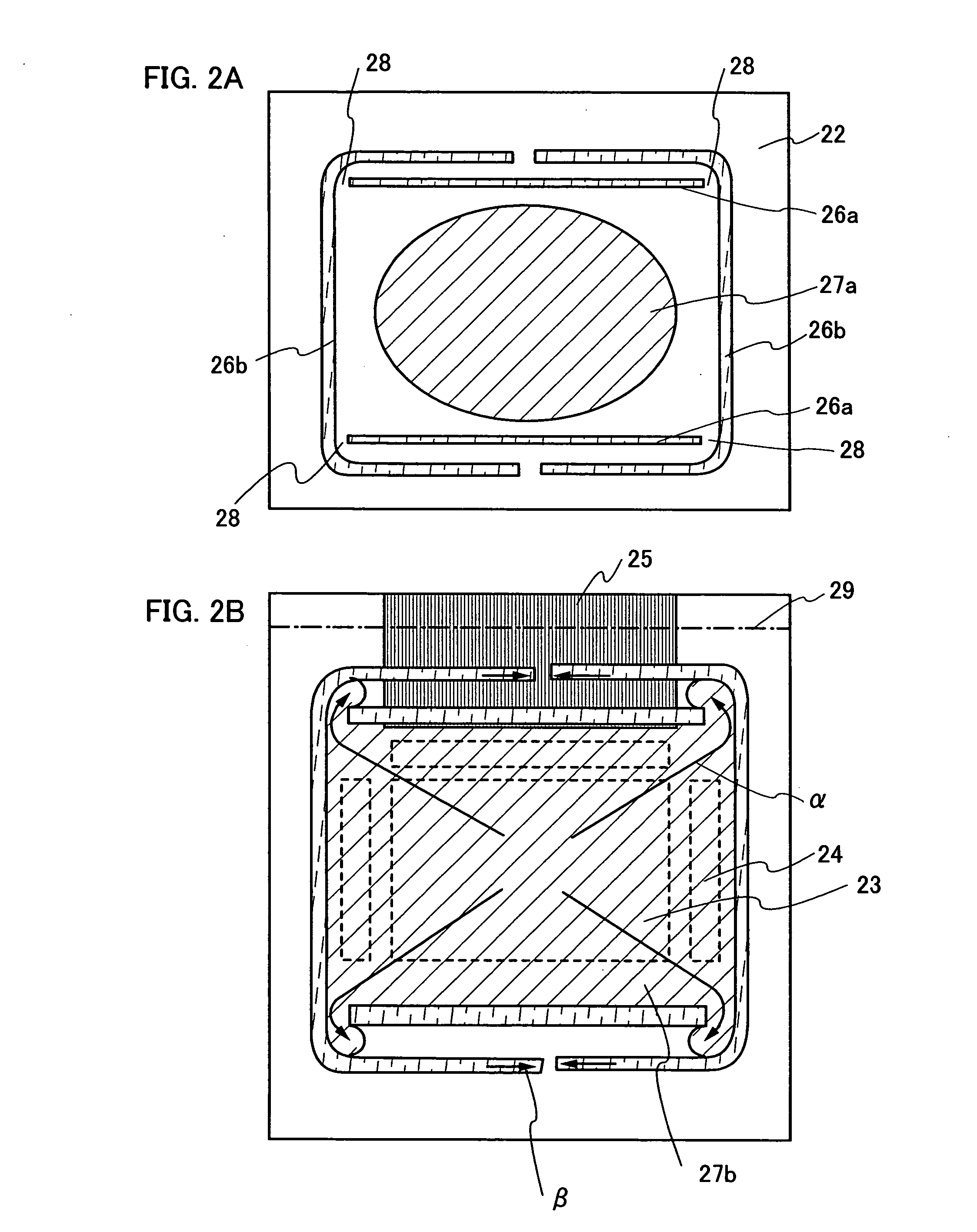Light emitting device and method for manufacturing the same
a technology of light emitting devices and manufacturing methods, which is applied in the direction of discharge tubes/lamp details, organic semiconductor devices, discharge tubes luminescnet screens, etc., can solve the problems of reducing the light-emitting efficiency of light-emitting elements, reducing the luminance of light-emitting elements, and shortened lifetimes of light-emitting elements, so as to achieve shorten the life, reduce the luminance of light-emitting elements, and high reliability
- Summary
- Abstract
- Description
- Claims
- Application Information
AI Technical Summary
Benefits of technology
Problems solved by technology
Method used
Image
Examples
embodiment
[0044] [Embodiment Mode 1]
[0045]FIG. 1 is a top view of an active matrix light emitting device according to the present invention as disclosed in the specification.
[0046] In FIG. 1A, reference numeral 11 denotes a first substrate; 12, a second substrate; 13, a pixel portion; 14, a driver circuit portion; 15, a terminal portion; each of 16a and 16b; a first sealing agent; and 17a, a second sealing agent.
[0047] Though the material for the first substrate 11 is not particularly limited, the first substrate is preferably formed of a material having a same thermal expansion coefficient as that of the second substrate 12 from the viewpoint of attaching to the second substrate 12. In the case of the bottom emission structure, the first substrate 11 is formed of a substrate having a light transmitting property such as a glass substrate, a quartz substrate, and a plastic substrate. In the case of the top emission structure, a semiconductor substrate, a metal substrate, and the like can be ...
embodiment 1
[0090] [Embodiment 1]
[0091] An example of a light-emitting device comprising an EL element that uses a layer containing an organic compound as a light emitting layer will be described in the present embodiment with reference to FIG. 5.
[0092]FIG. 5A is a top view of the light-emitting device and FIG. 5B is a cross-sectional view taken along a line A-A′ of FIG. 5A. Reference numeral 1101 denoted by a doted line is a source signal line driver circuit; 1102, a pixel portion; and 1103, a gate signal line driver circuit. Further, reference numeral 1104 denotes a sealing substrate and reference numeral 1105 denotes a first sealing agent. Inside surrounded by the first sealing agent 1105 is filled with a second transparent sealing agent 1107. Note that, the second sealing agent 1107 protrudes at four corners on a pixel region.
[0093] Reference numeral 1108 is a wiring for transmitting signals inputted to the source signal driver circuit 1101 and the gate signal line driver circuit 1103, an...
embodiment 2
[0104] [Embodiment 2]
[0105] In this embodiment, examples having different cross sectional structure from that of Embodiment Mode 2 will be shown in FIG. 6. In FIG. 6A, reference numeral 700 denotes a first substrate; each of 701a and 701b, an insulating layer; 702, a TFT; 709, an insulator; 710, an EL layer; 711, a second electrode; 712, a transparent protective layer; 713, a second sealing agent; and 714, a second substrate.
[0106] The TFT 702 (p-channel TFT) formed over the first substrate 700 is an element for controlling the electric current that flows through the EL layer 710 to emit light. Reference numeral 704 denotes a drain region (or a source region). Reference numeral 705 denotes a gate electrode. Though not shown in the drawings, one or a plurality of TFTs (n-channel TFTs or p-channel TFTs) is additionally provided for each pixel. Further, a TFT having one channel formation region 703 is illustrated here, but the present invention does not particularly limited thereto, a...
PUM
 Login to View More
Login to View More Abstract
Description
Claims
Application Information
 Login to View More
Login to View More - R&D
- Intellectual Property
- Life Sciences
- Materials
- Tech Scout
- Unparalleled Data Quality
- Higher Quality Content
- 60% Fewer Hallucinations
Browse by: Latest US Patents, China's latest patents, Technical Efficacy Thesaurus, Application Domain, Technology Topic, Popular Technical Reports.
© 2025 PatSnap. All rights reserved.Legal|Privacy policy|Modern Slavery Act Transparency Statement|Sitemap|About US| Contact US: help@patsnap.com



